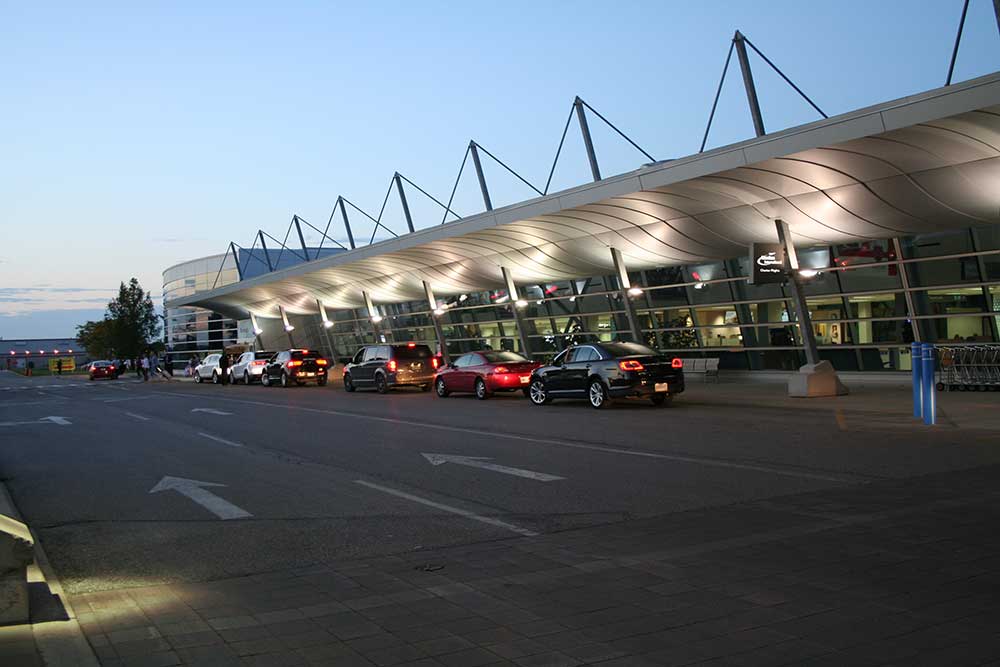Serving London and Southern Ontario
By Anna Guy
The London, Ontario airport continues to offer new destinations and features to keep passengers from competing airports south of the border.
 “Our number one challenge is competing with the air services offered at other airports, including the ultra low-cost carriers in the U.S.,” says Michael Seabrook, CEO of the London International Airport in London, Ontario. “Not to mention, we are surrounded by a lot of other airports (in Buffalo, Niagara, Toronto, Hamilton, Kitchener, Windsor, Detroit)…so we all fight for our market share.”
“Our number one challenge is competing with the air services offered at other airports, including the ultra low-cost carriers in the U.S.,” says Michael Seabrook, CEO of the London International Airport in London, Ontario. “Not to mention, we are surrounded by a lot of other airports (in Buffalo, Niagara, Toronto, Hamilton, Kitchener, Windsor, Detroit)…so we all fight for our market share.”
Fortunately, with Seabrook’s strategic direction, the airport has seen continued growth for the past last couple of years by putting out a “competitive product”, says Seabrook, that continues to increase the number of people through our doors.”
Seabrook has 26 years of experience with the London International Airport, most of which were in a business development capacity—making him an ideal choice for CEO when the airport’s Board of Directors wanted to grow and expand the airports capacity and business. Today, the airport remains competitive in the market, bringing in approximately $13 million annually. Seabrook adds the airport uses zero subsidies, pays taxes, and is a profitable business.
“Canada has a user-pay system, which is a lot more expensive in terms of operating costs than our American counterparts,” says Seabrook. “That results in higher costs for the consumer, which drives people to the U.S. We have done a lot of things to try to counter this, but you can only do so much without regulatory change.”
The London International Airport is a busy port by many definitions, and continues to benefit of the rest of London. It services 525,000 passengers a year on flights from Air Canada, WestJet, Encore, Sunwing, Air Transat and Celebrity Cruise. It also boasts a healthy general aviation sector and is, notably, in partnership with Western University’s Commercial Aviation Management Program, and the Norton Wolf School of Aviation Technology through Fanshaw College, which is housed in a $10 million hangar on site.
SUPPORTING CANADA’S MEGA HUB
As Toronto Pearson becomes a mega hub airport, Seabrook knows the London International Airport must be prepared to serve the growing passenger and cargo traffic demand.
“Toronto Pearson International Airport is getting near capacity, but there is no way of increasing their number of runways, so something needs to be done to alleviate their volume,” says Seabrook.
London is one of 11 airports who have joined together to work together to support growth and amplify the overall impact of air service for Southern Ontario. The resulting Southern Ontario Airport Network (SOAN) have banded together to accommodate the region’s explosive growth. In essence, they are banding together to better use the infrastructure of airports like London to allow Pearson Airport to become Canada’s mega hub.
“The creation of the Southern Ontario Airport Network is an important step in the evolution of airports in our region,” says Seabrook. “Meeting the passenger demands of our market and improving their airport experience are at the route of this initiative. The creation of the Southern Ontario Airport Network will achieve this outcome.”
THRIVE AND PROSPER
How will the most densely populated area of Canada continue to service the flying public?
“This area of Ontario is growing rapidly, and our airport will go the distance to make sure this region can thrive and prosper. To do so, we need good air infrastructure and the airports to work together to make sure the region’s air services needs are met. That lends itself to busy airports with more airlines and more flights to more destinations. That was really our motive in being part of this, to make sure the air transportation needs of the area are being met.”






